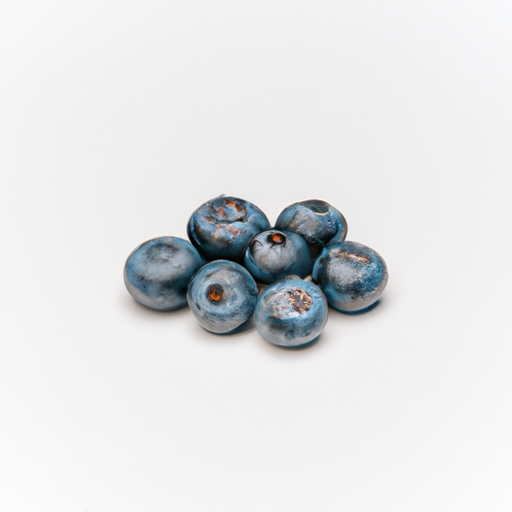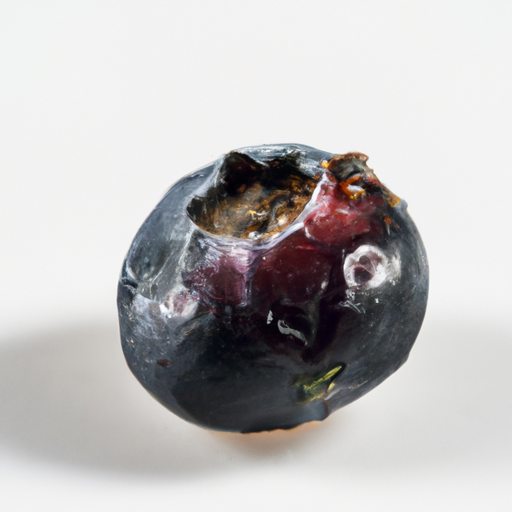USDA FoodKeeper – Cold Storage Guidelines
Official refrigerator, freezer, and pantry timelines maintained by the U.S. Department of Agriculture.
Visit USDA FoodKeeperDelightfully tart and bursting with antioxidants, these vibrant berries are a powerhouse in both flavor and nutrition. To make the most of their deliciousness, store them in the fridge and enjoy them within five days, but remember they can still be safe for a couple of days past that—just keep an eye on their freshness!
Vaccinium Blueberry Cranberry Huckleberry may remain safe to consume after its expiration date if it has been stored correctly at the proper temperature and shows no signs of spoilage. However, risk increases over time, especially if storage conditions were not optimal.
Storage timeline guidance: Some food safety sources suggest that vaccinium blueberry cranberry huckleberry, when stored properly at the correct temperature and showing no spoilage signs, may remain usable for approximately 2 days after its expiration date.
Important: This is not a guarantee of safety. Food safety depends on many factors including storage temperature, handling, initial freshness, and contamination risk. Always inspect food carefully for spoilage signs (odor, texture, color changes) before consuming. When in doubt, discard it to avoid foodborne illness.


Fridge
32-40°F (0-4°C)
Refrigerate in a perforated bag
Proper airflow and humidity control can extend produce freshness. Using produce storage containers (Amazon) in the refrigerator helps regulate moisture and slow spoilage.
5 days
Mold growth, mushy texture, off smell
Smoothies, jams, pies
Other berries like raspberries or strawberries
Sure thing! So, expiration dates and best quality dates can sometimes be confusing, right? Let me break it down for you in a simple way. Expiration dates, typically found on perishable items like dairy or meats, indicate when a product is no longer safe to consume. It's crucial to pay attention to these dates to avoid any health risks. On the other hand, best quality dates, often seen on products like canned goods or dried fruits, suggest when the item may start to lose its optimal taste or texture, but it's still safe to eat beyond that date. For your Vaccinium Blueberry Cranberry Huckleberry blend, if you see an expiration date, don't consume it after that date. However, if it has a best quality date, the flavor and texture might not be as great past that date, but it should still be safe to eat. Personally, if it's just a bit past the best quality date, I'd probably still enjoy it, especially if it looks and smells fine. What about you?
To check if Vaccinium Blueberry Cranberry Huckleberry has gone bad, look for any signs of mold or discoloration on the surface. Give it a sniff for any sour or off-putting odors. Lastly, feel the berries for any mushy or slimy texture, which indicates spoilage.
Hey there! When it comes to enjoying Vaccinium berries like blueberries, cranberries, and huckleberries, it's essential to be mindful of food safety to avoid foodborne illnesses. One common risk is contamination from bacteria like Salmonella or E. coli, which can cause symptoms like stomach cramps, nausea, and diarrhea. To reduce these risks, always make sure to wash your berries thoroughly before eating them. Even if they look clean, a quick rinse can help remove any lingering bacteria. Another tip is to store your Vaccinium berries in the refrigerator to prevent them from spoiling quickly. If you notice any moldy or mushy berries, toss them out to avoid potential food poisoning. To stay safe, always buy berries from reputable sources and check for any safety warnings on packaging. It's better to be safe than sorry when it comes to enjoying these delicious and nutritious berries! Stay mindful of food safety practices, and you'll be able to enjoy your Vaccinium berries without any worries.
Ah, berries are some of my favorite fruits! When it comes to storing Vaccinium berries like blueberries, cranberries, and huckleberries, here are some practical hacks and tips: 1. **Fridge Storage**: Store berries in the fridge in a single layer on a paper towel-lined tray to prevent moisture buildup and keep them fresh longer. 2. **Freezing**: Spread the berries in a single layer on a baking sheet and freeze them before transferring to a freezer bag for long-term storage. This prevents them from sticking together. 3. **Vacuum Sealing**: Invest in a vacuum sealer to extend the shelf life of your berries even further by removing excess air from the storage bags. 4. **Dehydration**: If you have a dehydrator, you can dehydrate berries to enjoy them as snacks or toppings for oatmeal and salads. 5. **Make Preserves**: Turn your Vaccinium berries into jams or preserves that can be stored for months and enjoyed throughout the year. I personally love freezing blueberries to use in smoothies or baking throughout the year. Experiment with different storage methods to find what works best for you!
Hey there! Let's talk about the delicious world of Vaccinium fruits - blueberries, cranberries, and huckleberries. Did you know that these berries are not only tasty but also packed with antioxidants and vitamins? Blueberries are often called nature's superfood because of their health benefits. Native to North America, they were a staple in the diets of Indigenous peoples and have since become beloved worldwide. Cranberries are known for their tart flavor and are a Thanksgiving favorite in the form of cranberry sauce. Fun fact: cranberries grow in bogs and are harvested by flooding the fields with water, making for a unique harvesting process. Huckleberries are similar to blueberries but smaller and have a more intense flavor. They are a popular ingredient in pies and jams in the Pacific Northwest. Each of these Vaccinium berries has its own cultural significance and culinary uses, making them not only delicious but also culturally rich and diverse. Next time you enjoy a blueberry muffin, cranberry sauce, or huckleberry jam, remember the fascinating history and flavors of these amazing berries!
Once opened, Vaccinium Blueberry Cranberry Huckleberry should be consumed within 2 days if stored in the fridge. To maintain freshness, consider transferring the berries to an airtight container after opening.
Vaccinium Blueberry Cranberry Huckleberry can be safely consumed if left at room temperature for a short period, such as up to 2 hours. Beyond that, the risk of bacterial growth increases. To be safe, refrigerate any leftovers promptly.
Yes, the type of container can impact the shelf life of Vaccinium Blueberry Cranberry Huckleberry. Opt for airtight containers to extend freshness. Avoid storing the berries in metal containers, as the acidity of the berries can react with the metal.
Still not sure if it's safe?
Our Food Expiration & Storage Quick Guide helps you decide quickly — with clear keep-or-discard rules for the most common foods.
Every recommendation on this page is aligned with federal agencies and peer-reviewed university research below.
Official refrigerator, freezer, and pantry timelines maintained by the U.S. Department of Agriculture.
Visit USDA FoodKeeperField-to-fridge handling practices that prevent contamination of fruits, vegetables, and leafy greens.
Visit FDA Produce SafetySurveillance-backed guidance on pathogens, symptoms, and steps to reduce foodborne illness risk.
Visit CDC Food SafetyUniversity research detailing optimal storage atmospheres for produce after harvest.
Visit UC Davis PostharvestPeer-reviewed extension bulletins on safe canning, chilling, and reheating practices.
Visit Penn State ExtensionNeed deeper reading? Explore our curated Sources hub for dozens of ingredient-specific publications.
Reviewed by the Can I Eat Expired Editorial Team, using food safety guidance from the USDA, FDA, CDC, and university extension programs.
Dairy Products
View expiration date and storage guide →
Beverages
View expiration date and storage guide →
Cooking Ingredients
View expiration date and storage guide →
Beverages
View expiration date and storage guide →
Ready-to-Eat Meals
View expiration date and storage guide →
Dairy Products
View expiration date and storage guide →
Breakfast Foods
View expiration date and storage guide →
Dairy Products
View expiration date and storage guide →
Dairy Products
View expiration date and storage guide →
Important: These are general guidelines based on authoritative sources listed above. Always use your best judgment and when in doubt, throw it out. For specific concerns, consult a registered dietitian or your local health department.
Disclosure: As an Amazon Associate, we earn from qualifying purchases. This helps support our site and allows us to continue providing free food safety information.